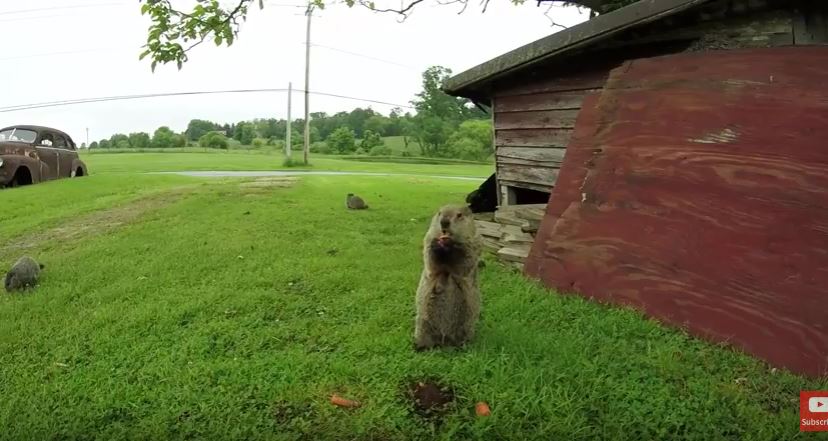About groundhogs: Appearance, biology, life cycle, habitat, diet, behavior

Groundhogs are animals that can be really troublesome if you live within the lowland regions. Groundhogs are within a rodent group called marmots and they are short legged and short furred in nature. They are wild animals, so there is a natural conflict between them and humans. They have very sharp claws and that is why they are so good at burrowing.
Appearance
They are short and their height is between 40-60 cm. Their height can vary depending on the region. They make use of their digging ability and use it as a defense mechanism, and their curved and thick claws assist them. They have short fur which is thick enough for them to remain warm when it is cold. Their legs are also short and they may be grayish or brownish in color. Their weight is 2-4 kgs.
Biology and lifecycle
Groundhogs reproduce through mating and the season typically starts in March and comes to a close in April. The females give birth to around 2-6 groundhogs every year and when they finish breeding, they go into hibernation together with the young in winter. They have a lifespan of between 9-14 years, but this greatly depends on the prevailing conditions. They have many predators, including eagles, bears, foxes, wolves and cougars, among others.
Habitat and diet
They love the open regions located in lowlands and they generally live in woods and forests where they eat plants and animals. They also love such areas because they can create burrows due to the fact that the ground is soft and muddy. They can travel in search of food and if you live near such an area, you may encounter them as they wander the streets or roads at night.
Behavior
The behavior of groundhogs is very interesting. They are not social and they may only interact with others during the hibernation season. They are also very aggressive and love to dominate a region. You can also spot them as they fight with other animals to establish their dominant position.
They make good burrows and they can move up to a cubic meter. They create burrows in such a way that predators find it hard to gain entry. There are groundhogs that will remain out of the burrow in order to watch out for any predators and warn others if they spot any. They usually whistle and the others know there is danger.
Go back to the How to Get Rid of Groundhogs page or email us if you have any other questions about About groundhogs: Appearance, biology, life cycle, habitat, diet, behavior
About Us
We are the Pest Education Network, a non-profit organization that focuses on wildlife and pest removal education. Our approach utilizes Integrated Pest Management, a strategy advocating prevention and humane methods.


